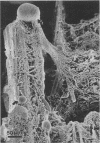Abstract
The activities of cellulolytic and xylanolytic enzymes produced by an anaerobic fungus (R1) which resembled Neocallimastix sp. were investigated. Carboxymethylcellulase (CMCase), cellobiase, and filter paper (FPase) activities had pH optima of 6.0, 5.5, and 6.0, respectively. CMCase and cellobiase activities both had a temperature optimum of 50 degrees C, whereas FPase had an optimum of 45 degrees C. The pH and temperature optima for xylanase activity were pH 6.0 and 50 degrees C, respectively. Growth of the fungus on wheat straw, wheat straw holocellulose, or cellulose resulted in substantial colonization, with at least 43 to 58% losses in substrate dry matter and accumulation of comparable amounts of formate. This end product was correlated to apparent loss of substrate dry weight and could be used as an indicator of fungal growth. Milling of wheat straw did not enhance the rate or extent of substrate degradation. Growth of the R1 isolate on the above substrates or xylan also resulted in accumulation of high levels of xylanase activity and lower cellulase activities. Of the cellulases, CMCase was the most active and was associated with either low or trace amounts of cellobiase and FPase activities. During growth on xylan, reducing sugars, including arabinose and xylose, rapidly accumulated in the medium. Xylose and other reducing sugars, but not arabinose, were subsequently used for growth. Reducing sugars also accumulated, but not as rapidly, when the fungus was grown on wheat straw, wheat straw holocellulose, or cellulose. Xylanase activities detected during growth of R1 on media containing glucose, xylose, or cellobiose suggested that enzyme production was constitutive.(ABSTRACT TRUNCATED AT 250 WORDS)
Full text
PDF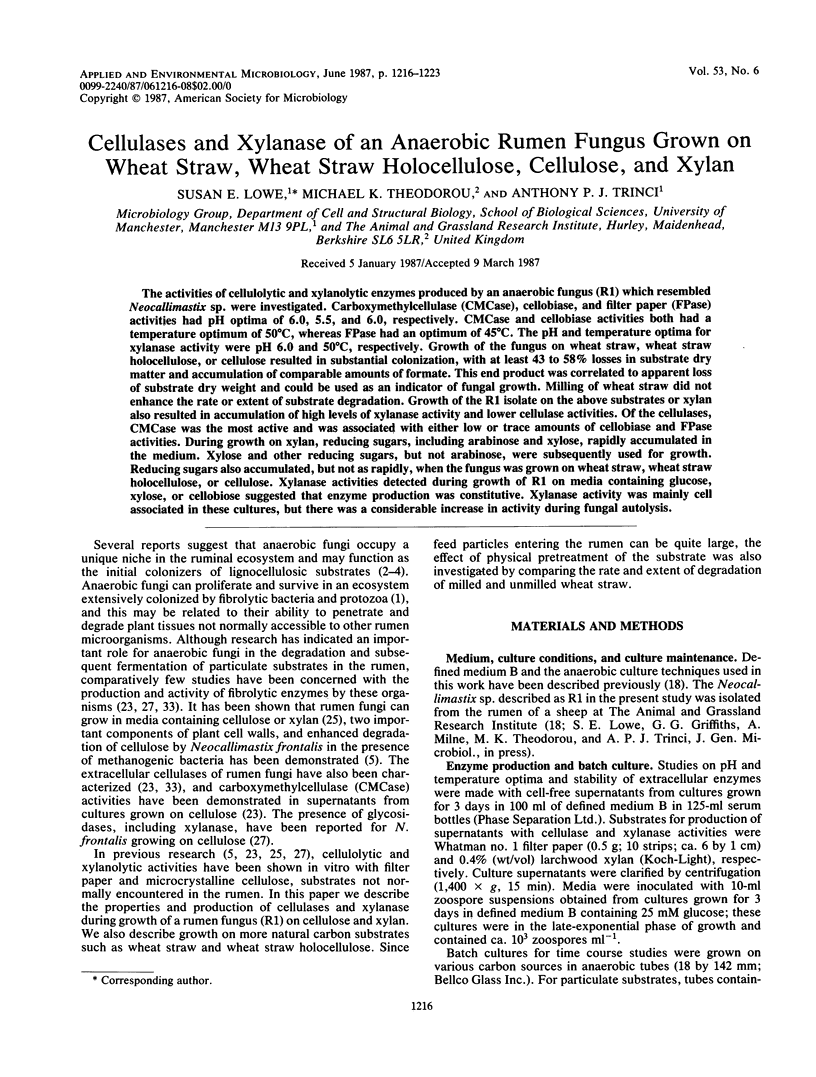
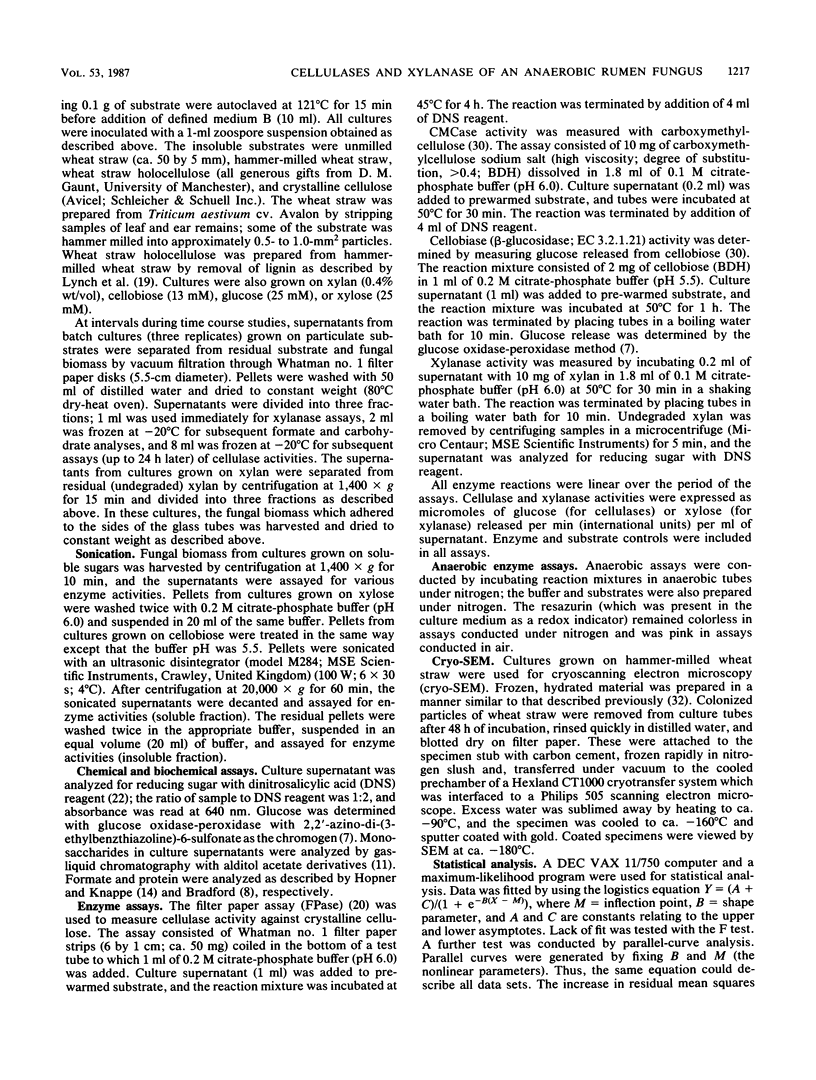
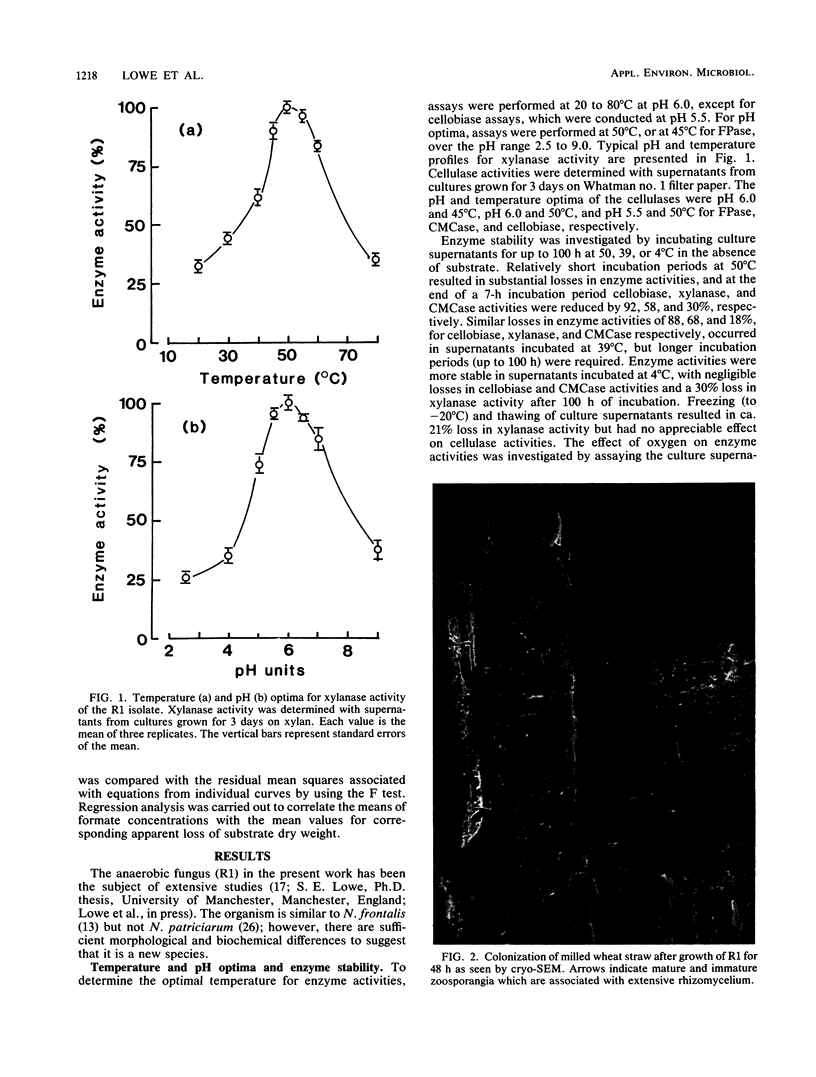
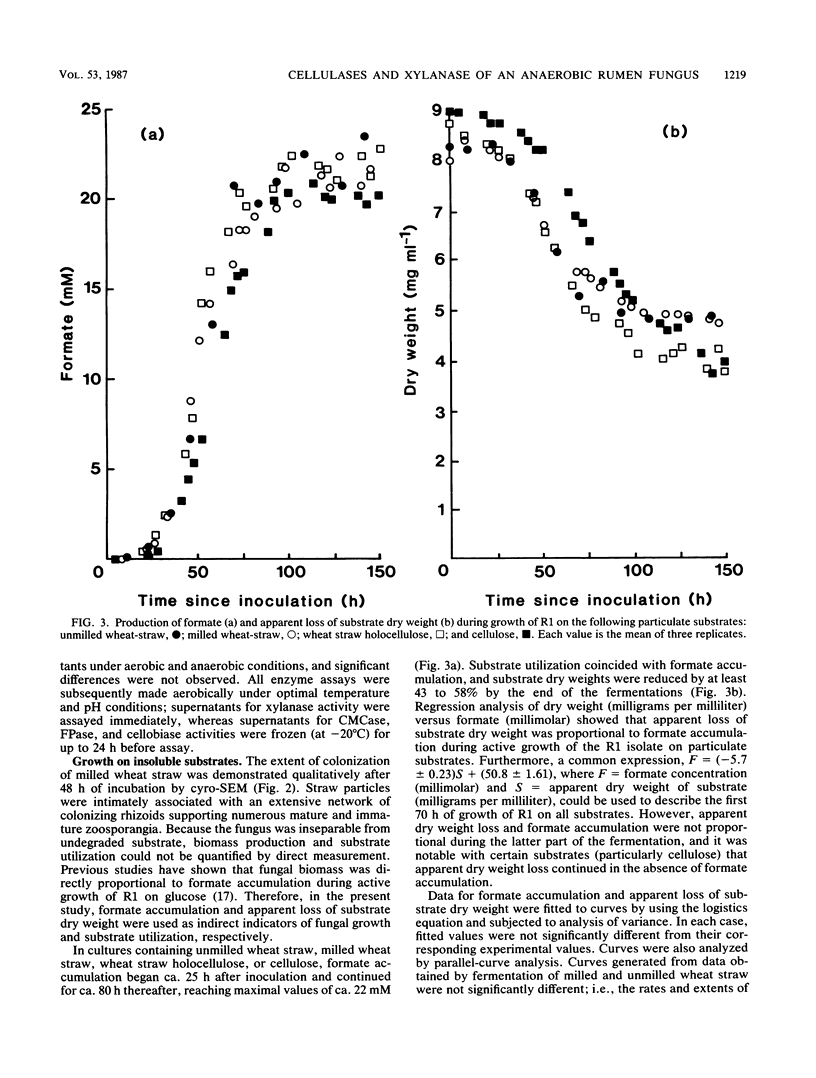
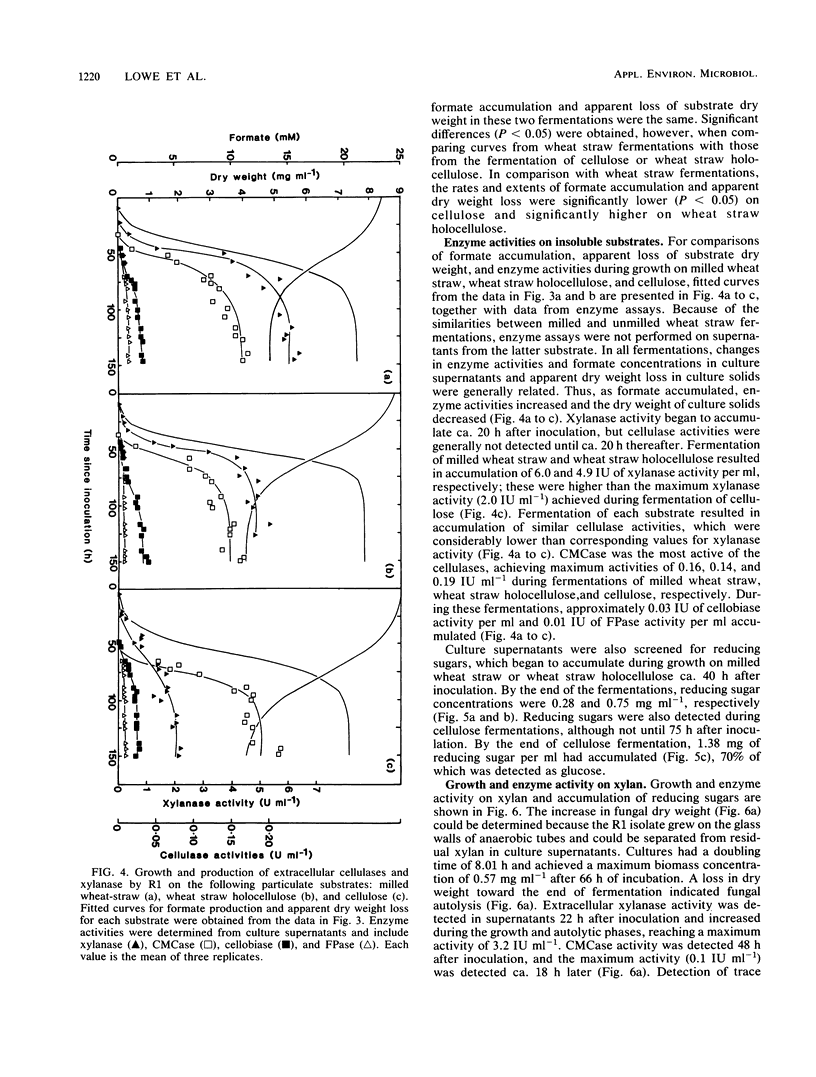
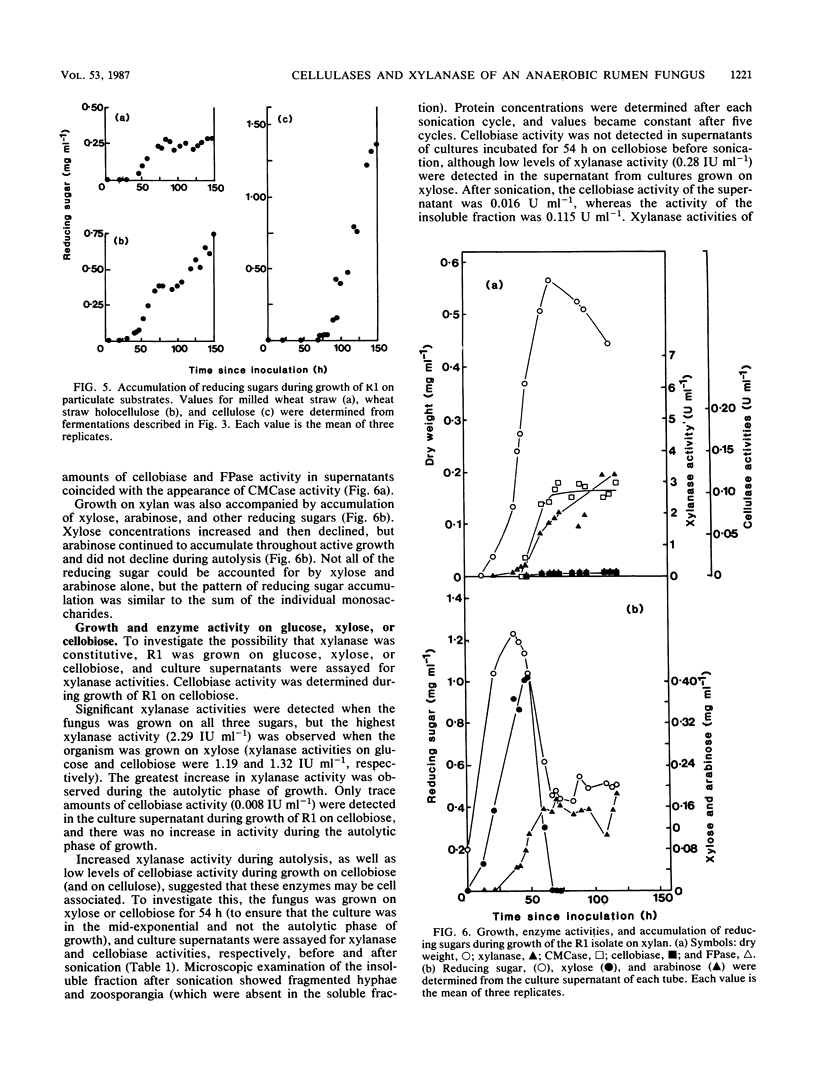
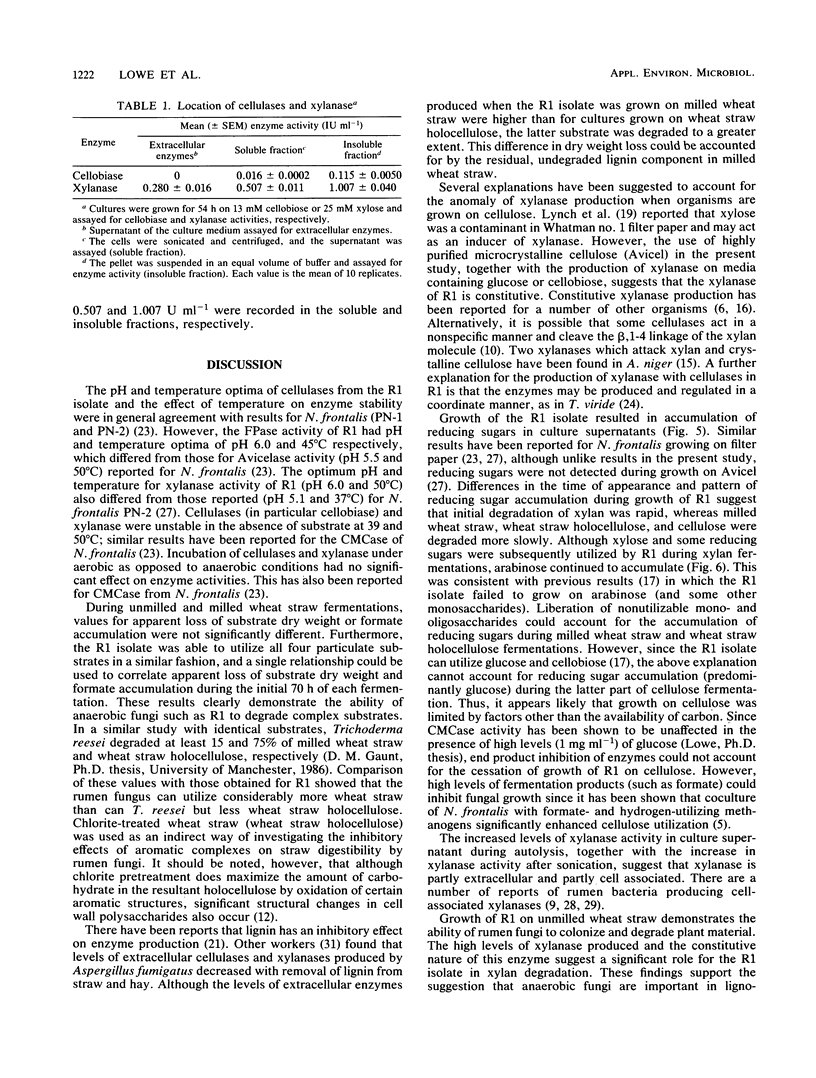
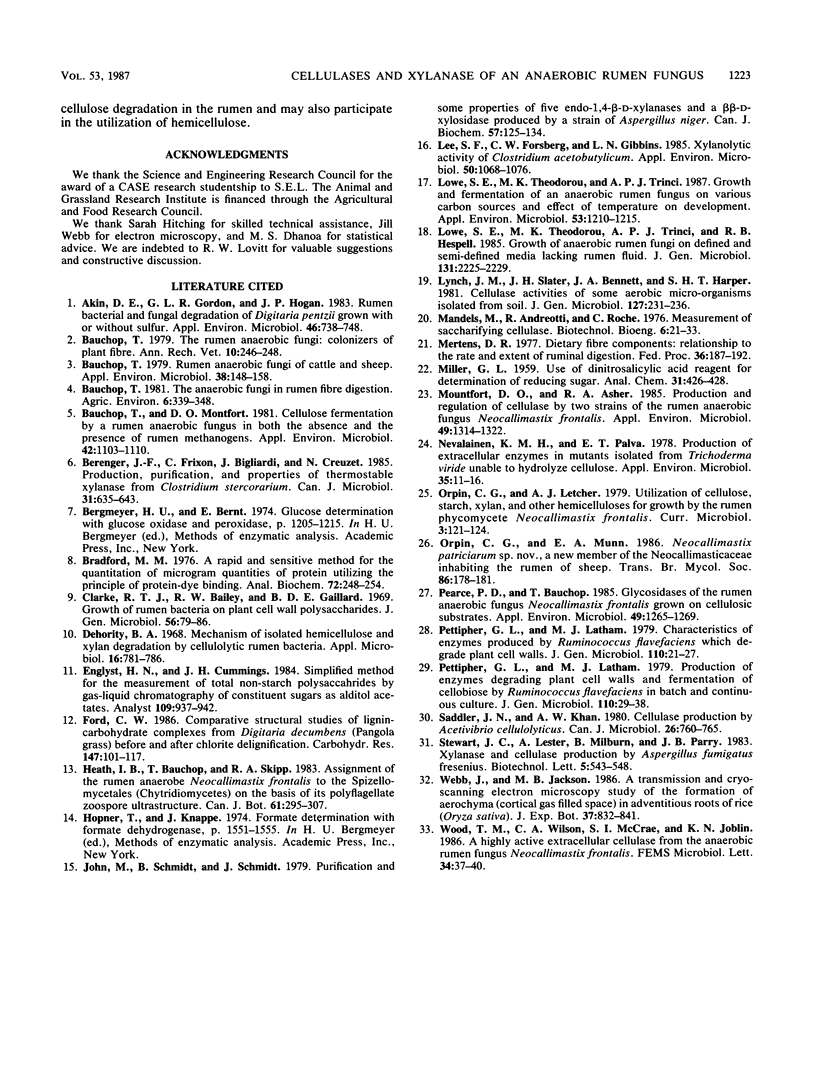
Images in this article
Selected References
These references are in PubMed. This may not be the complete list of references from this article.
- Akin D. E., Gordon G. L., Hogan J. P. Rumen bacterial and fungal degradation of Digitaria pentzii grown with or without sulfur. Appl Environ Microbiol. 1983 Sep;46(3):738–748. doi: 10.1128/aem.46.3.738-748.1983. [DOI] [PMC free article] [PubMed] [Google Scholar]
- Bauchop T., Mountfort D. O. Cellulose fermentation by a rumen anaerobic fungus in both the absence and the presence of rumen methanogens. Appl Environ Microbiol. 1981 Dec;42(6):1103–1110. doi: 10.1128/aem.42.6.1103-1110.1981. [DOI] [PMC free article] [PubMed] [Google Scholar]
- Bauchop T. Rumen anaerobic fungi of cattle and sheep. Appl Environ Microbiol. 1979 Jul;38(1):148–158. doi: 10.1128/aem.38.1.148-158.1979. [DOI] [PMC free article] [PubMed] [Google Scholar]
- Bauchop T. The rumen anaerobic fungi: colonizers of plant fibre. Ann Rech Vet. 1979;10(2-3):246–248. [PubMed] [Google Scholar]
- Bradford M. M. A rapid and sensitive method for the quantitation of microgram quantities of protein utilizing the principle of protein-dye binding. Anal Biochem. 1976 May 7;72:248–254. doi: 10.1016/0003-2697(76)90527-3. [DOI] [PubMed] [Google Scholar]
- Clarke R. T., Bailey R. W., Gaillard B. D. Growth of rumen bacteria on plant cell wall polysaccharides. J Gen Microbiol. 1969 Apr;56(1):9–86. [PubMed] [Google Scholar]
- Dehority B. A. Mechanism of isolated hemicellulose and xylan degradation by cellulolytic rumen bacteria. Appl Microbiol. 1968 May;16(5):781–786. doi: 10.1128/am.16.5.781-786.1968. [DOI] [PMC free article] [PubMed] [Google Scholar]
- John M., Schmidt B., Schmidt J. Purification and some properties of five endo-1,4-beta-D-xylanases and a beta-D-xylosidase produced by a strain of Aspergillus niger. Can J Biochem. 1979 Feb;57(2):125–134. doi: 10.1139/o79-016. [DOI] [PubMed] [Google Scholar]
- Lee S. F., Forsberg C. W., Gibbins L. N. Xylanolytic Activity of Clostridium acetobutylicum. Appl Environ Microbiol. 1985 Oct;50(4):1068–1076. doi: 10.1128/aem.50.4.1068-1076.1985. [DOI] [PMC free article] [PubMed] [Google Scholar]
- Lowe S. E., Theodorou M. K., Trinci A. P. Growth and fermentation of an anaerobic rumen fungus on various carbon sources and effect of temperature on development. Appl Environ Microbiol. 1987 Jun;53(6):1210–1215. doi: 10.1128/aem.53.6.1210-1215.1987. [DOI] [PMC free article] [PubMed] [Google Scholar]
- Mandels M., Andreotti R., Roche C. Measurement of saccharifying cellulase. Biotechnol Bioeng Symp. 1976;(6):21–33. [PubMed] [Google Scholar]
- Mertens D. R. Dietary fiber components: relationship to the rate and extent of ruminal digestion. Fed Proc. 1977 Feb;36(2):187–192. [PubMed] [Google Scholar]
- Mountfort D. O., Asher R. A. Production and regulation of cellulase by two strains of the rumen anaerobic fungus Neocallimastix frontalis. Appl Environ Microbiol. 1985 May;49(5):1314–1322. doi: 10.1128/aem.49.5.1314-1322.1985. [DOI] [PMC free article] [PubMed] [Google Scholar]
- Nevalainen K. M., Palva E. T. Production of extracellular enzymes in mutants isolated from trichoderma viride unable to hydrolyze cellulose. Appl Environ Microbiol. 1978 Jan;35(1):11–16. doi: 10.1128/aem.35.1.11-16.1978. [DOI] [PMC free article] [PubMed] [Google Scholar]
- Pearce P. D., Bauchop T. Glycosidases of the rumen anaerobic fungus Neocallimastix frontalis grown on cellulosic substrates. Appl Environ Microbiol. 1985 May;49(5):1265–1269. doi: 10.1128/aem.49.5.1265-1269.1985. [DOI] [PMC free article] [PubMed] [Google Scholar]



